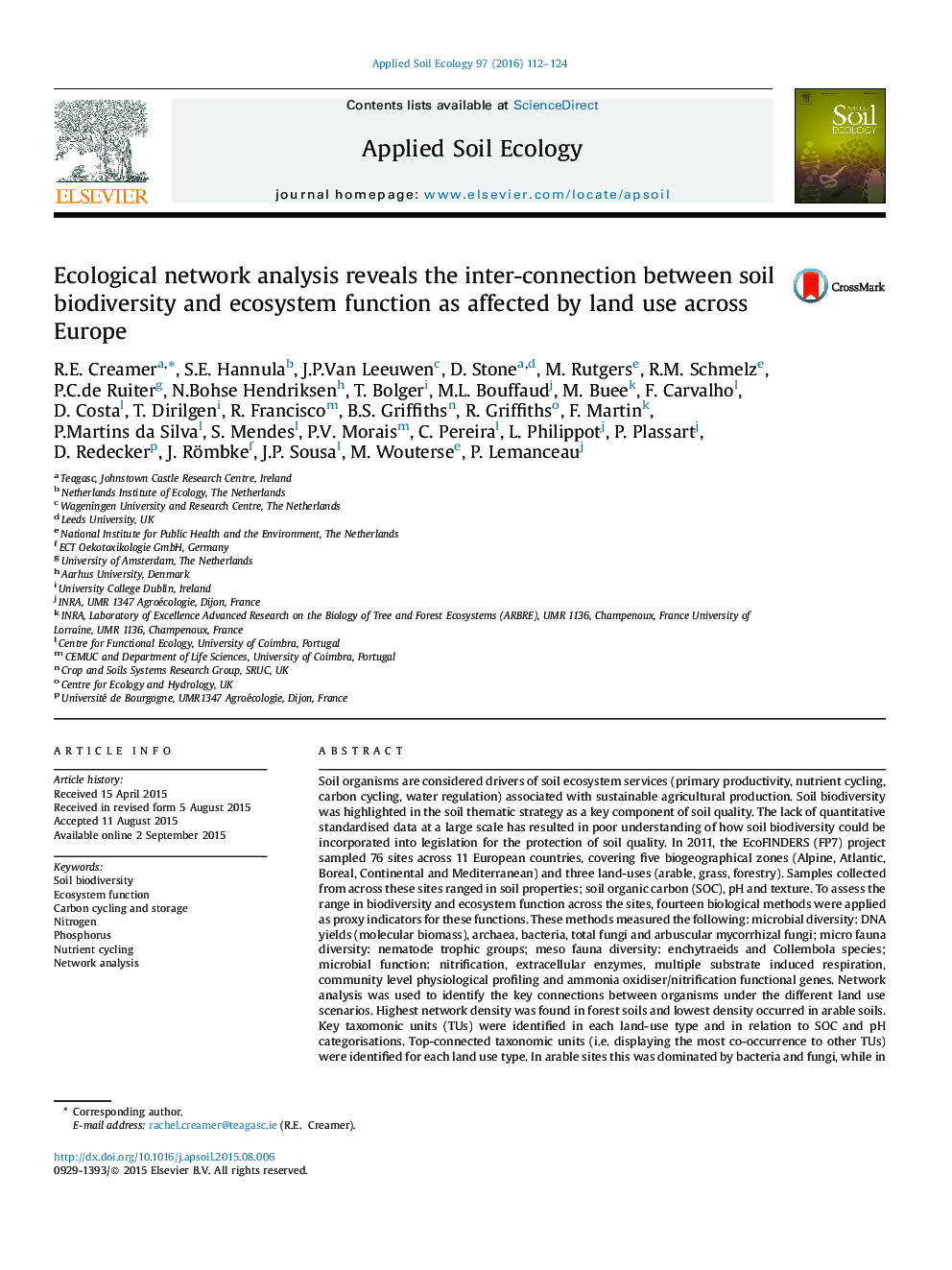| کد مقاله | کد نشریه | سال انتشار | مقاله انگلیسی | نسخه تمام متن |
|---|---|---|---|---|
| 4381979 | 1617786 | 2016 | 13 صفحه PDF | دانلود رایگان |
• Application of fourteen biological indicators at 76 sites across Europe.
• Land use intensification lowered density networks and reduced in the average number of neighbours.
• Basal respiration, molecular microbial biomass and fungal richness describe soil carbon cycling.
Soil organisms are considered drivers of soil ecosystem services (primary productivity, nutrient cycling, carbon cycling, water regulation) associated with sustainable agricultural production. Soil biodiversity was highlighted in the soil thematic strategy as a key component of soil quality. The lack of quantitative standardised data at a large scale has resulted in poor understanding of how soil biodiversity could be incorporated into legislation for the protection of soil quality. In 2011, the EcoFINDERS (FP7) project sampled 76 sites across 11 European countries, covering five biogeographical zones (Alpine, Atlantic, Boreal, Continental and Mediterranean) and three land-uses (arable, grass, forestry). Samples collected from across these sites ranged in soil properties; soil organic carbon (SOC), pH and texture. To assess the range in biodiversity and ecosystem function across the sites, fourteen biological methods were applied as proxy indicators for these functions. These methods measured the following: microbial diversity: DNA yields (molecular biomass), archaea, bacteria, total fungi and arbuscular mycorrhizal fungi; micro fauna diversity: nematode trophic groups; meso fauna diversity: enchytraeids and Collembola species; microbial function: nitrification, extracellular enzymes, multiple substrate induced respiration, community level physiological profiling and ammonia oxidiser/nitrification functional genes. Network analysis was used to identify the key connections between organisms under the different land use scenarios. Highest network density was found in forest soils and lowest density occurred in arable soils. Key taxomonic units (TUs) were identified in each land-use type and in relation to SOC and pH categorisations. Top-connected taxonomic units (i.e. displaying the most co-occurrence to other TUs) were identified for each land use type. In arable sites this was dominated by bacteria and fungi, while in grassland sites bacteria and fungi were most connected. In forest soils archaeal, enchytraeid and fungal TUs displayed the largest number of neighbours, reflecting the greatest connectivity. Multiple regression models were applied to assess the potential contribution of soil organisms to carbon cycling and storage and nutrient cycling of specifically nitrogen and phosphorus. Key drivers of carbon cycling were microbial biomass, basal respiration and fungal richness; these three measures have often been associated with carbon cycling in soils. Regression models of nutrient cycling were dependent on the model applied, showing variation in biological indicators.
Figure optionsDownload as PowerPoint slide
Journal: Applied Soil Ecology - Volume 97, January 2016, Pages 112–124
